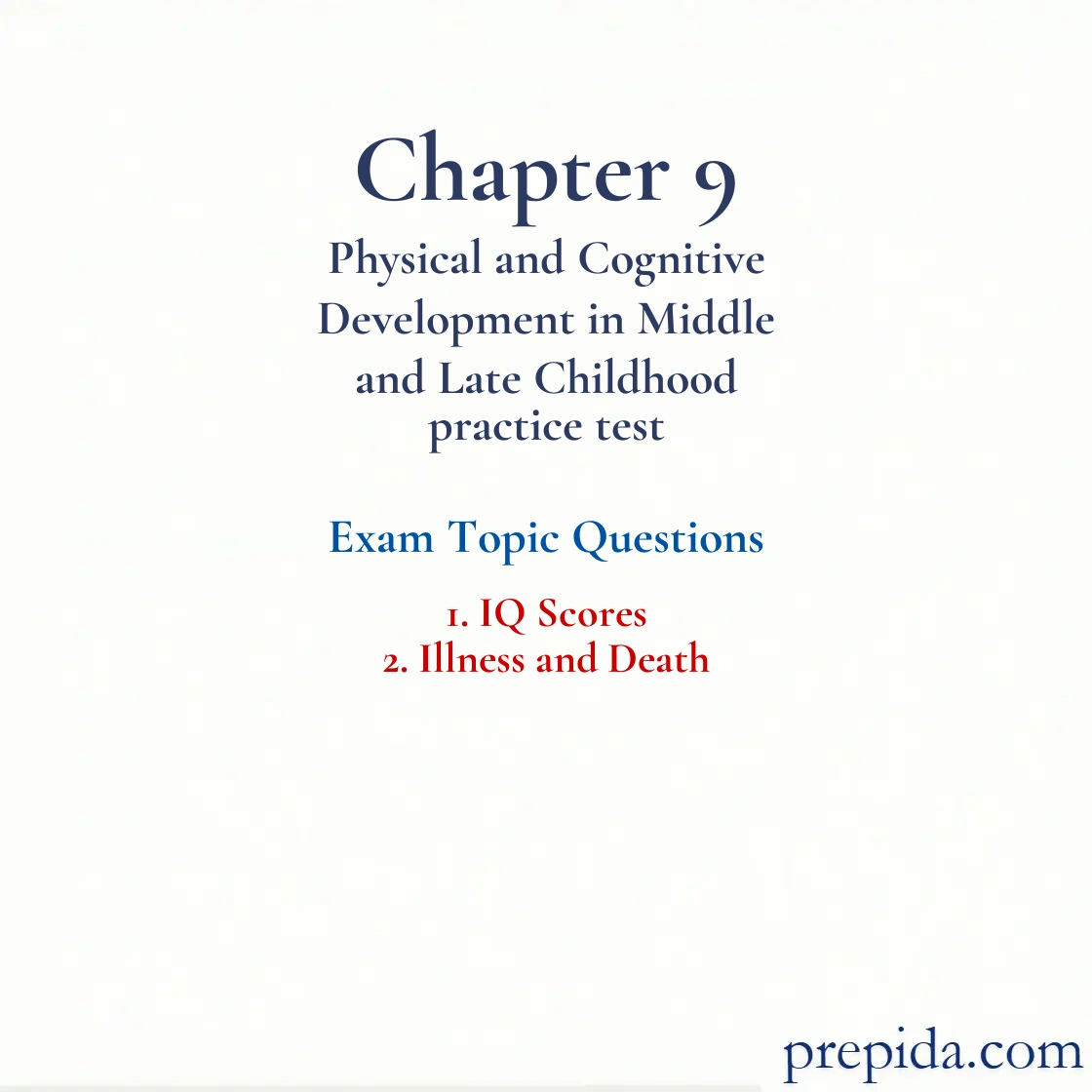
It is considered difficult to create culture-fair intelligence tests because they
- predominantly test the nonverbal skills of the test taker.
- consider the values that are common to all test takers.
- reflect the cultures of some test takers more than others.
- use only standardized test items familiar to all test takers.
Intelligence: Problem-solving skills and the ability to learn from and adapt to the experiences of everyday life.
If intelligence is assumed to be normally distributed, which of the following would you expect to find in the overall population?
- more people of high intelligence than of low intelligence
- more people of moderate intelligence than of high or low intelligence
- more people of high intelligence than of moderate or low intelligence
- more people of low intelligence than of moderate or high intelligence
Intelligence: Problem-solving skills and the ability to learn from and adapt to the experiences of everyday life.
Mental age (MA) is
- the age that an individual mentally identifies himself at.
- the age at which an individual attains cognitive maturity.
- an individual's level of mental development relative to others.
- an individual's age at the time of peak cortical thickness.
Mental Age (MA): Binet’s measure of an individual’s level of mental development compared with that of others.
The worldwide increase in intelligence test scores that has occurred over a short period of time has been called the ________ effect.
- Binet
- Goleman
- Flynn
- Wechsler
Intelligence: Problem-solving skills and the ability to learn from and adapt to the experiences of everyday life.
Considering how early intervention programs to improve intellectual development have shown marked improvements in the IQ of participants, it can be inferred that the main reason children from low SES families earn lower scores on IQ tests is that
- the parents have difficulty providing an intellectually stimulating environment for their children.
- the genes for lower intelligence are passed down from the parents to the children.
- IQ tests are culture-fair tests.
- IQ tests fail to test for street-smarts and practical intelligence.
Affordances: Opportunities for interaction offered by objects that fit within our capabilities to perform functional activities.
Peter is in charge of conducting an IQ test in the school where he teaches. Which of the following points should he keep in mind about the test and the results?
- IQ is the sole indicator of competence in students.
- The IQ test is a measure of fixed potential in students.
- It is perfectly normal to stereotype students based on their test scores.
- In addition to students' intellectual competence, their creative and practical skills need to be considered.
Creative Thinking: The ability to think in novel and unusual ways and to come up with unique solutions to problems.
Which of the following statements about IQ or intelligence is true?
- Modifications in environment have no impact on one's IQ score.
- Schooling has been shown to have no influence on intelligence.
- The conception of intelligence is the same across cultures.
- IQ scores have been rapidly increasing around the world.
The ________ not only provide an overall IQ score but also yield several composite indexes that allow the examiner to quickly determine the areas in which a child is strong or weak.
- Wechsler scales
- Brazelton Neonatal Behavioral Assessment Scales
- Stanford-Binet tests
- Apgar Scales
Who created the concept of intelligence quotient?
- Alfred Binet
- William Stern
- David Wechsler
- Robert J. Sternberg
Intelligence Quotient (IQ): A person’s mental age divided by chronological age, multiplied by 100.
Which of the following statements is true about cardiovascular disease in children?
- Cardiovascular disease is common in children.
- There is no scientific evidence of high blood pressure in children.
- High blood pressure goes undiagnosed in 75 percent of children with the disease.
- Behaviors in childhood do not affect the development of cardiovascular disease in later life.